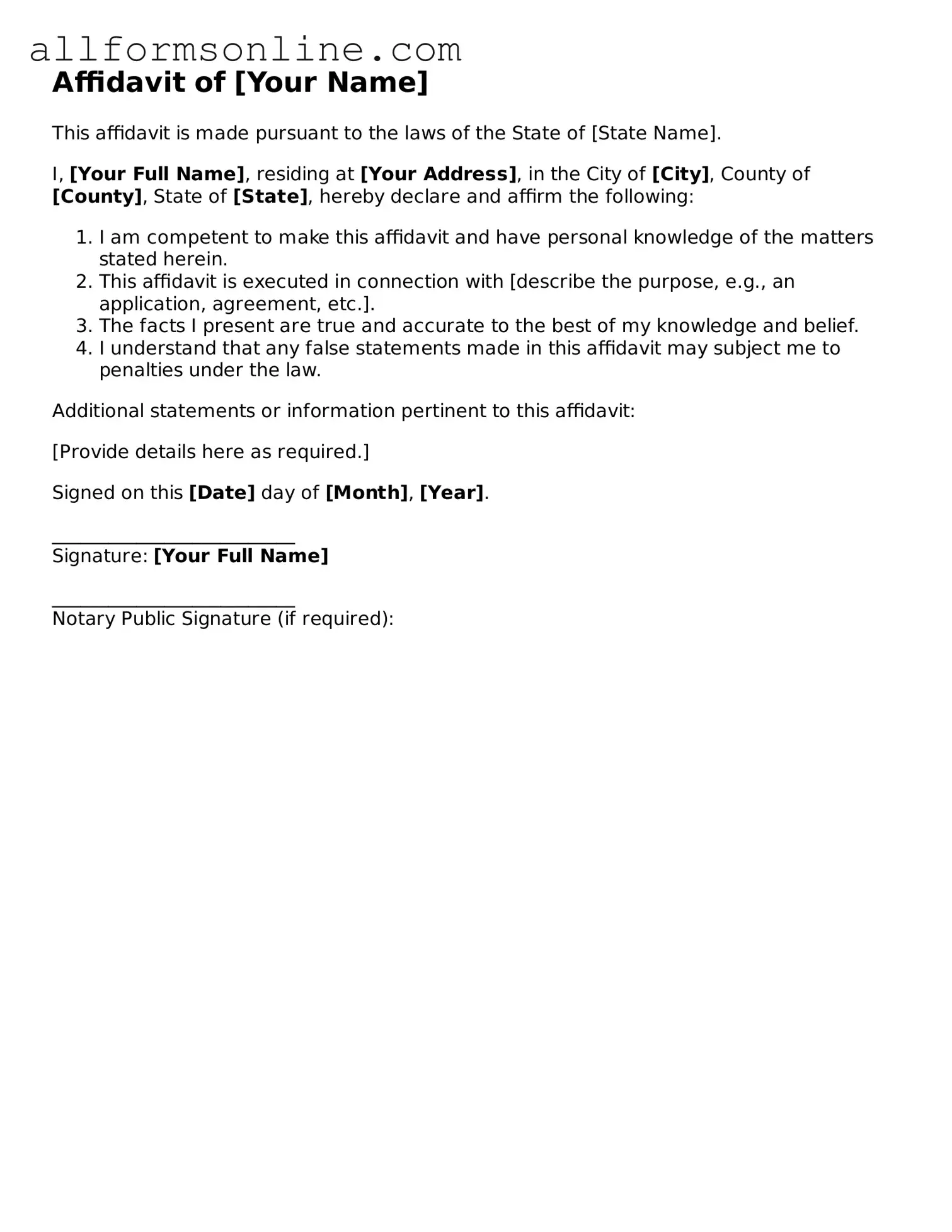What is an affidavit?
An affidavit is a written statement made under oath. It is used in legal settings to provide evidence or support claims in court. The person making the affidavit, known as the affiant, swears that the information contained within the document is true to the best of their knowledge. Affidavits can cover a wide range of topics, from personal testimony to financial declarations, and they must be signed in front of a notary public or another authorized official.
When should I use an affidavit?
You should consider using an affidavit when you need to provide a formal statement of facts in a legal matter. Common situations include applying for a court order, supporting a motion, or providing evidence in a case. Affidavits can also be useful in administrative processes, such as verifying identity or confirming residency. Always ensure that the affidavit is relevant to your specific situation and meets the requirements of the jurisdiction in which it will be used.
How do I prepare an affidavit?
Preparing an affidavit involves several key steps. First, clearly outline the facts you need to present. Be concise and stick to relevant information. Next, draft the affidavit, including an introduction that identifies you as the affiant, a statement of truth, and the specific facts you wish to convey. After drafting, review the document for accuracy and clarity. Finally, sign the affidavit in front of a notary public or authorized official, who will then notarize the document, confirming your identity and the authenticity of your signature.
Can I use an affidavit for any type of legal matter?
While affidavits are versatile and can be used in many legal contexts, they are not appropriate for every situation. Courts generally accept affidavits as evidence, but they must comply with specific rules and regulations. Some matters may require different forms of evidence or documentation. Always consult with a legal professional to determine if an affidavit is suitable for your case and to ensure that it meets the necessary legal standards.
